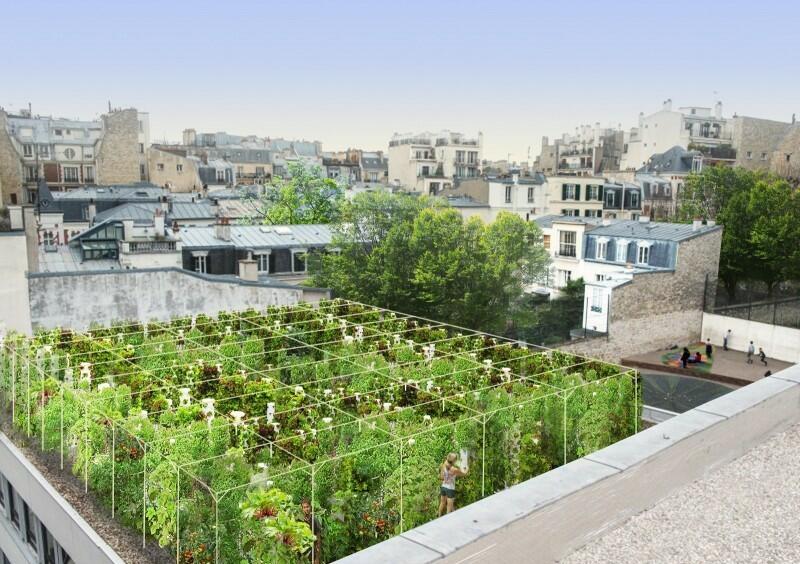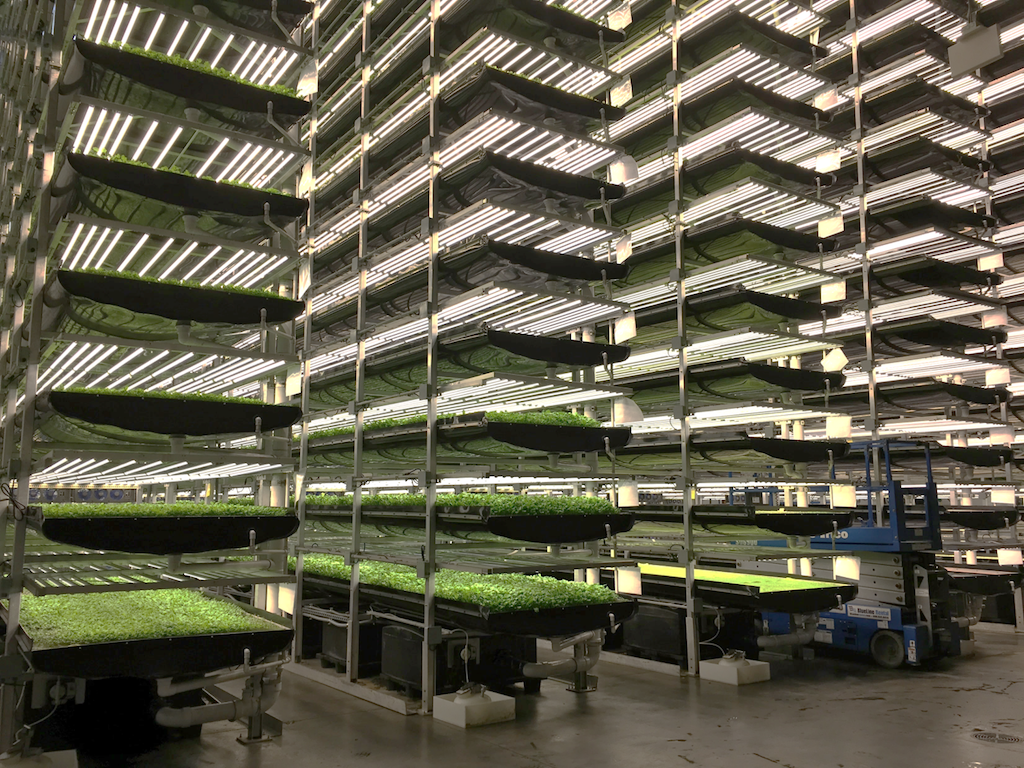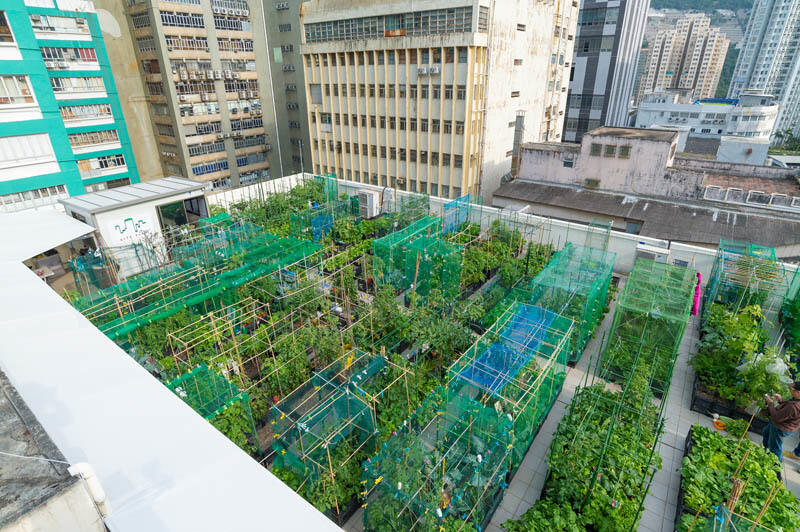Introduction
Supplying food to urban residents might seem like a problem that is quite distant from the issues usually associated with architecture, yet there is a strong connection between the two. By allowing for the simplifying of city infrastructure and making it more accessible to food suppliers, architecture provides numerous opportunities for improving the speed and efficacy of food delivery to cities. As the study of the ways in which cities’ accessibility could be improved for food suppliers, agritecture is based on principles that can address this problem.
Solutions
Case Study 1
Agritecture offers a plethora of solutions for increasing the accessibility of food services to cities. Exploring the areas that can be used for agricultural purposes within cities is a viable option for managing agricultural issues. For example, the French project titled “Parisculteurs” suggests using rooftops as places for creating green space for future food production (‘Paris to turn a third of its green space into urban farms’ 2018) (see Figure 1). The proposed approach requires the creation of agricultural space in which technological advances will need to be incorporated to enhance the productivity of urban farming.
The project does not imply incorporating a top-down approach into an urban farming context. Instead, it allows for diversifying it and introducing new opportunities for delivering food to urban residents. As a result, local food distribution hubs can function more efficiently and manage existing resources more resiliently.

Case Study 2
Another solution to the problem of delivering food to cities, as viewed through the lens of agritecture, is the creation of vertical farms. This can also be seen as an attempt to integrate disruptive technology into contemporary agritecture to enhance the food supply (see Figure 2). Similarly to the previous option, which provided for using rooftops as areas for growing food, this idea invites citizens to rethink the use of space for agricultural purposes (Khan & Ahmed 2017). By increasing the number of options for locating farms within an urban landscape, the concept of vertical farms is a viable and potentially effective element of managing the issue of food resources.
The use of vertical farms is likely to revolutionize agriculture, since it implies that cities will not have to remain overly dependent on resources linked to agriculture and architecture once vertical farms are integrated into the urban setting. Hydroponic materials will be required to maintain the functioning of vertical farms to ensure that the plants located in them are protected from factors that may hamper their development in the city (Khan & Ahmed 2017).
In addition, the delivery of necessary materials may appear to be quite difficult at first due to the location of the vertical farms. However, with the adoption of smart technology for identifying possible risks, citizens will be able to address the problem of food resources for urban residents.

Case Study 3
The third suggestion, which entails restructuring the available resources and maximizing the benefits that urban agriculture advances have to offer, should also be considered as an opportunity to manage the problem at hand. This proposed solution suggests that the current agriculture framework used within the urban setting should be transformed into a diversified economy based on the promotion of urban agricultural development. Aerofarms are an excellent example of how this solution is implemented in an urban environment (see Figure 3). With the help of an aeroponic system of growing plants, the Aerofarms technology has opened new horizons for making agricultural products more available to urban residents (Januszkiewicz & Jarmusz 2018).

The integration of an agritecture framework based on Root System Architecture is likely to yield impressive results when it comes to improving the food supply of urban residents. A recent study shows that the adoption of an aeroponic system may create numerous opportunities for addressing a lack of agricultural products in a city environment (Koevoets et al. 2016). Specifically, Koevoets et al. (2016) insist that the implementation of an aeroponic system in an urban setting will lead to a significant rise in the amount of produce and provide citizens with access to these resources.
The results of the research point to a necessity to adopt a careful approach toward reducing salt stress in crops and using hydrotropism to address the problem of water supplies in an urban environment (Koevoets et al. 2016). However, the research outcomes suggest that it is possible to build a comprehensive agritectural approach toward managing the issue of food supplies in a city environment.
The concept of vertical farms is quite similar to Root System Agritecture since it implies re-evaluating the areas used for agricultural purposes within a city. However, unlike the former, the latter would suggest creating entire buildings for the purpose of farming (Sivamani, Kwak, & Cho 2014). Therefore, the area utilized for farming is increased, and the target setting can be customized to create an environment in which plants will grow properly, including the required levels of humidity, temperature, and other factors.
Discussion
As the case studies considered above have shown, the problem of delivering food to urban environments remains a significant concern for a wide range of cities. The solutions that are currently being adopted in the realm of agritecture to solve the dilemma appear to be viable, yet they lack the consistency and support needed to make them more widely applicable.
For instance, the ‘Parisculteurs’ program, which uses rooftop space as a location for growing fruit and vegetables, is admittedly sensible, yet the management of rooftop areas is likely to be quite complicated. Specifically, delivering a large amount of supplies, including pesticides, nutrients, and water, to the top of several-storey buildings might become technologically challenging and not quite cost-effective. Therefore, while quite feasible, this project may be unsustainable for cities with a complex infrastructure.
The study by Koevoets et al. (2016) also demonstrates that the promotion of agritecture within an urban environment is likely to yield impressive results. However, the aeroponic system that the authors provide in their analysis shows that the problem of delivering the necessary supplies to the target setting may become very convoluted. The issue is linked to the dilemma of the agricultural infrastructure within the proposed system, or, to be more accurate, the lack thereof. The creation of green infrastructure, which will allow for reducing the amount of resources consumed by building a system for managing agriculture-related issues, such as irrigation, provision of the required nutrients, and the prevention of harm caused by insects, will be needed.
The use of rooftops as areas for growing food is very similar to the concept of vertical farms in its approach toward the arrangement of urban space for agricultural purposes. However, unlike rooftop farms, vertical farms also make it possible to resolve the issue of resources in an urban setting. Due to the emphasis on incorporating recycled materials into the creation of vertical farms and growing food, the concept deserves particularly close attention.
This solution is unique in its ability to encompass both sustainability principles and the management of food resources. By refocusing the current framework for allocating food resources and utilizing technology to shape agritecture within an urban context, one can build a sustainable strategy toward increasing the availability of food while simultaneously managing levels of waste and reducing the negative effects of agritectural approaches on the environment.
Conclusion
The process of delivering food to an urban setting might become very complicated due to obstacles associated with infrastructure, but the application of the principles of agritecture will help resolve these problems. The current projects demonstrate that changes in urban infrastructure can be utilized to enhance the development of agritecture and create a setting in which products can be grown within an urban environment. However, the proposed solutions will require significant changes to the management of food resources and related supplies necessary for sustaining the growth of plants and the operation of the technologies that maintain the required temperature, humidity, and other factors needed for growing food.
Therefore, the future focus of agritecture should be on seeking opportunities for expanding the current agriculture-based economy within an urban setting and using resources for cost-effective strategies combined with the latest technologies, such as aeroponic systems. By maximizing the utilization of the urban environment, a foundation can be built for the rapid growth of agritecture. As a result, the problem of food supplies within city limits can finally be resolved.
Reference List
Adams, P 2017, What will it really take for vertical farms to succeed? image. Web.
Januszkiewicz, K & Jarmusz, M 2018, ‘Food security in highly urbanized areas during the era of climate change’, GSTF Journal of Engineering Technology (JET), vol. 5, no. 1, pp. 1-11.
Khan, RRA & Ahmed, V 2017, ‘Building Information Modelling and vertical farming: data integration to manage facilities and processes’, Facilities, vol. 35, no. 13/14, pp. 710-724.
Koevoets, IT, Venema, JH, Elzenga, JT & Testerink, C 2016, ‘Roots withstanding their environment: exploiting root system architecture responses to abiotic stress to improve crop tolerance’, Frontiers in Plant Science, vol. 7, no. 1335, pp. 1-19.
Les Parisculteurs 2016, image. Web.
‘Paris to turn a third of its green space into urban farms’ 2018, CNN. Web.
Sivamani, S, Kwak, K & Cho, Y 2014, ‘A design of web-based services using RESTful API for vertical farm’, Life Science Journal, vol. 11, pp. 763-767.
Yuen, S 2017, Hong Kong’s rooftop farms look up to the skies, image. Web.